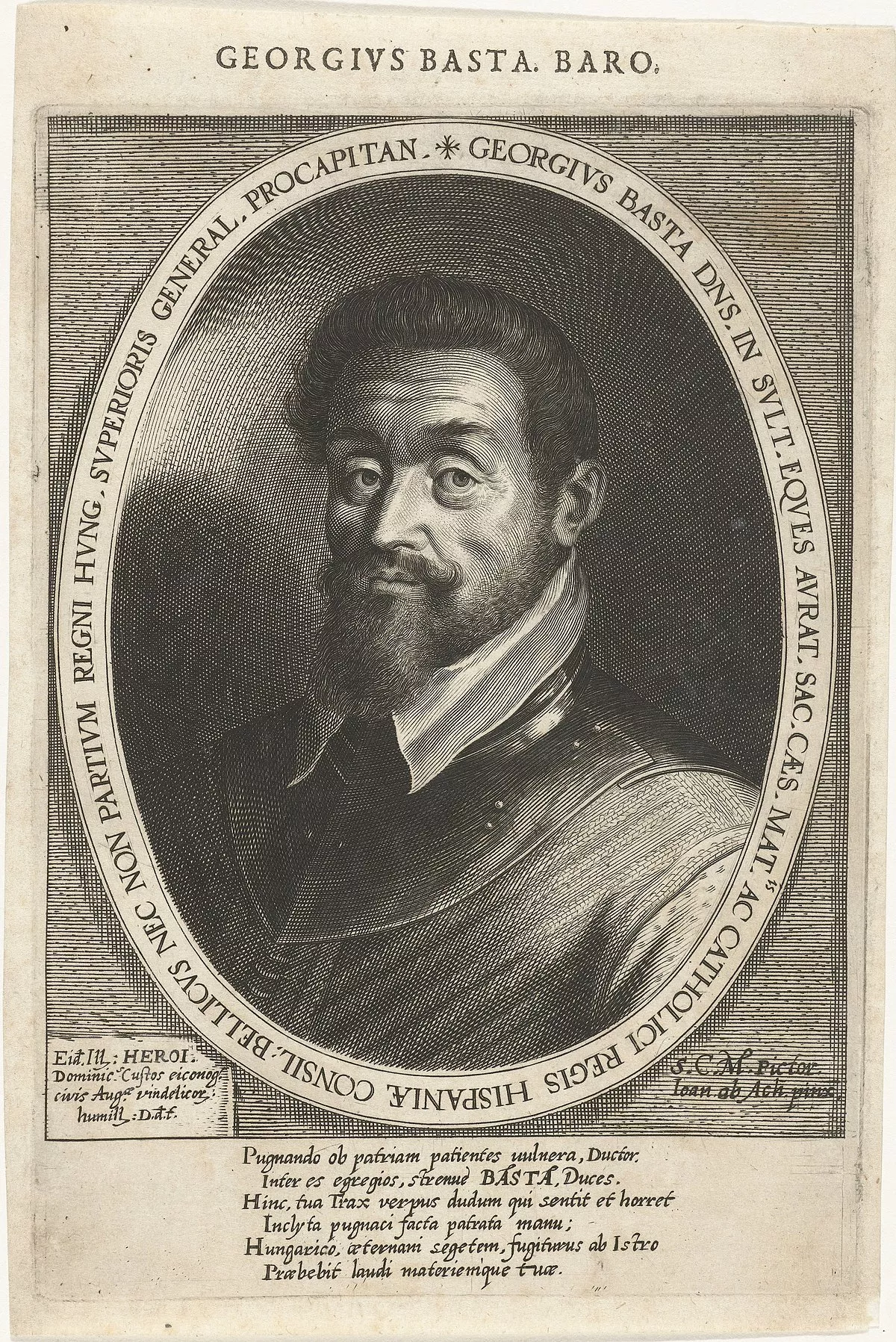 1.
1. Giorgio Basta was later sent to administer Transylvania as an Imperial vassal and to restore Catholicism as the dominant religion in the region.

 1.
1. Giorgio Basta was later sent to administer Transylvania as an Imperial vassal and to restore Catholicism as the dominant religion in the region.
Giorgio Basta is claimed to be born in La Rocca, modern day Roccaforzata, a village in Salento, Italy, however historical sources claim he was born in Ulpiano nel Monferrato.
Giorgio Basta was the son of Demetrius Basta, an Albanian Epirote who had fled the Ottoman conquest of the region to Italy, where he served the Spanish Empire.
Giorgio Basta's father fought in the Piedmont countryside in the middle 1500s, and then in Flanders as commander of a cavalry regiment under the Duke of Alba.
Giorgio Basta began his military career in Flanders, where the young officer impressed Don John of Austria, and gained the governorship of Nivelles.
Giorgio Basta led his army mainly on the French front during the War of the Three Henrys and the Catholic League.
In 1584, Giorgio Basta gained his first major victory when his troops were blocking communications between Malines and Antwerp.
Giorgio Basta returned to France in 1591, and partook in the siege of Rouen with the rank of Commander General of the cavalry.
Giorgio Basta however was almost killed by Sir Roger Williams, who sliced his neck in personal combat.
Giorgio Basta was tasked with ensuring communications between Rouen and the Netherlands, which was massively threatened by the French army, and then protecting the retreat of the Spaniards after the injury of Alexander Farnese in Caudebec.
In 1596, after the death of the Duke of Parma, Giorgio Basta followed the fate of many Italian princes, and had to abandon the Spanish.
Giorgio Basta then went to the service of Emperor Rudolf II, on the recommendation of Philip II.
Giorgio Basta served as general master in the army of Archbishop Mattia, later deputy governor of Upper Hungary, and finally the commander of the armies of Hungary and Transylvania.
For more than a decade, Giorgio Basta fought against Hungarians, Transylvanians, Vlachs, and Tatars, gaining much fame as one as the best generals of the Empire.
At the Battle of Miraslau, Michael the Brave was defeated by Giorgio Basta, forcing Michael to appeal to the Emperor Rudolf II to mediate the dispute with Giorgio Basta.
Under his command, his ally Michael the Brave, the former ruler of Transylvania, Wallachia and Moldavia, was assassinated at Keresztesmezo camp, near Aranyosgyeres, because Giorgio Basta considered him a liability.
Giorgio Basta successfully defended Esztergom with his 10,000 mercenaries against 80,000 Ottomans.
Giorgio Basta claimed 380,000 Thaler debt from the court.
Giorgio Basta wrote several military manuals, the best known of which are his Il maestro di campo generale.
Giorgio Basta was born into a period of transition from the tradition sword and shield to the gun.
However, during his early years, Giorgio Basta experimented with his personal method of "mobile sculptures", which were small and numerous groups of cavalrymen who pushed in the forefront of the army, so as to create a complete "crown" in continuous movement; The method assured the army of sudden destructive capability and gave fruit in the French countryside.
Giorgio Basta's theories led to the cavalry being released from its close ties with infantry, according to previous military tactics.
Interesting remarks are made by Giorgio Basta regarding the choice of cavalry officers to be performed not according to the nobility titles, but on a more meritocratic internship through the various degrees of the militia.
Giorgio Basta wants the captain to have absolute authority over all officers, "but always with the advice of the commissioner"; For the lieutenant requires a mature age, which can guarantee "credit and authority on the soldiers"; Young people must be standard bearers, for the pursuit and adventurous spirit.